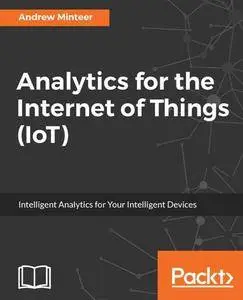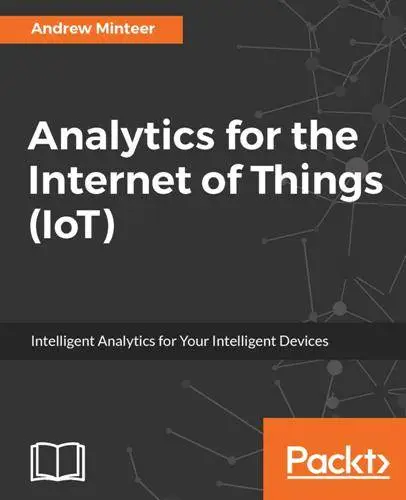Analytics for the Internet of Things (IoT)
by Andrew Minteer
English | 2017 | ISBN: 1787120732 | 369 Pages | True PDF | 26 MB
by Andrew Minteer
English | 2017 | ISBN: 1787120732 | 369 Pages | True PDF | 26 MB
This book targets developers, IoT professionals, and those in the field of data science who are trying to solve business problems through IoT devices and would like to analyze IoT data. IoT enthusiasts, managers, and entrepreneurs who would like to make the most of IoT will find this equally useful. A prior knowledge of IoT would be helpful but is not necessary. Some prior programming experience would be useful
What You Will Learn:
- Overcome the challenges IoT data brings to analytics
- Understand the variety of transmission protocols for IoT along with their strengths and weaknesses
- Learn how data flows from the IoT device to the final data set
- Develop techniques to wring value from IoT data
- Apply geospatial analytics to IoT data
- Use machine learning as a predictive method on IoT data
- Implement best strategies to get the most from IoT analytics
- Master the economics of IoT analytics in order to optimize business value
We start with the perplexing task of extracting value from huge amounts of barely intelligible data. The data takes a convoluted route just to be on the servers for analysis, but insights can emerge through visualization and statistical modeling techniques. You will learn to extract value from IoT big data using multiple analytic techniques.
Next we review how IoT devices generate data and how the information travels over networks. You’ll get to know strategies to collect and store the data to optimize the potential for analytics, and strategies to handle data quality concerns.
Cloud resources are a great match for IoT analytics, so Amazon Web Services, Microsoft Azure, and PTC ThingWorx are reviewed in detail next. Geospatial analytics is then introduced as a way to leverage location information. Combining IoT data with environmental data is also discussed as a way to enhance predictive capability. We’ll also review the economics of IoT analytics and you’ll discover ways to optimize business value.
By the end of the book, you’ll know how to handle scale for both data storage and analytics, how Apache Spark can be leveraged to handle scalability, and how R and Python can be used for analytic modeling.



